Important Tips for Safely Aging in Place
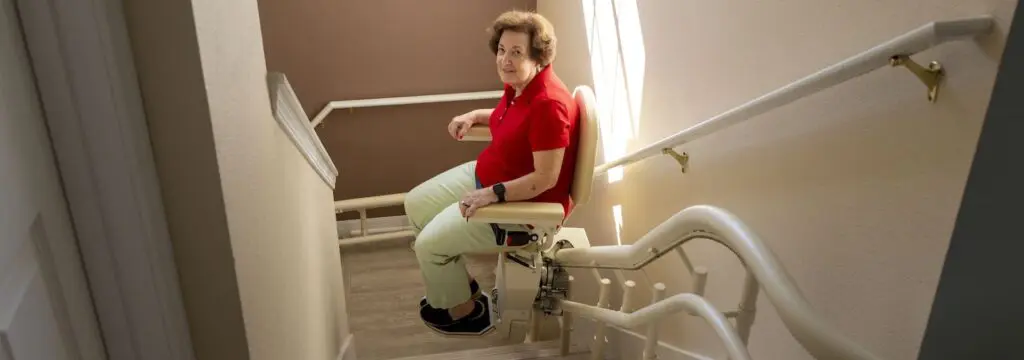
As people age, many prefer to stay in their homes rather than move to assisted living facilities. Aging in place can provide a sense of comfort, familiarity, and independence. However, ensuring your home is safe and functional as you grow older is essential. This guide offers practical tips for remodeling your home, addressing safety hazards, and planning for long-term needs, so you or your loved ones can age in place comfortably and securely.
What is Aging in Place?
Aging in place refers to the decision to live independently in your own home as you grow older, rather than relocating to assisted living facilities or nursing homes. This choice often comes with emotional benefits, such as maintaining a connection to your community and surroundings. However, it requires proactive planning and potential home modifications to ensure a safe and accessible environment.
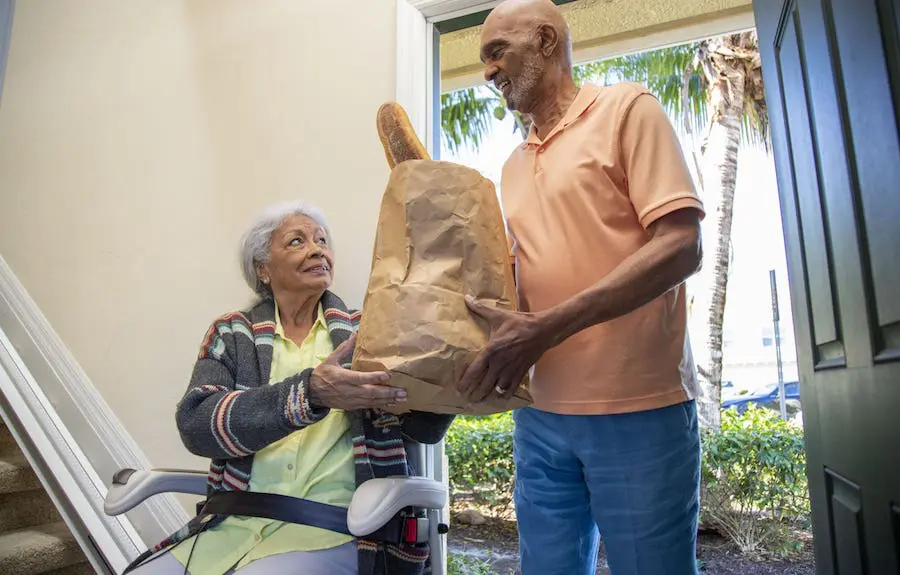
Should You Age in Place or Go to an Assisted Living Facility?
The decision between aging in place and moving to an assisted living facility depends on various factors, including health, mobility, financial resources, and personal preferences. Aging in place is ideal for individuals who value their independence and have a strong support system. However, those who need around-the-clock medical care may benefit more from the structured environment of an assisted living facility.
Reasons Someone Would Prefer Living at Home:
- Familiarity and Comfort: Staying in a familiar environment can reduce stress and promote emotional well-being.
- Independence: Aging in place allows seniors to maintain control over their daily routines and lifestyle choices.
- Personalized Environment: Seniors can modify their homes to meet their specific needs and preferences, unlike standardized living spaces in facilities.
- Cost Savings: Depending on the level of care required, aging in place may be more affordable than assisted living facilities.
- Emotional Well-Being: Living at home can provide a sense of autonomy and dignity that positively impacts mental health.
- Pet Ownership: Many seniors prefer staying home because it allows them to continue caring for their pets.
For some, these benefits outweigh the convenience and care provided by assisted living facilities, making aging in place a preferred option.
Home Remodeling Checklist for Aging in Place
Making strategic home modifications can significantly enhance safety and accessibility, ensuring your home adapts to your needs as you age. Below is a detailed room-by-room checklist with practical examples to guide your remodeling efforts.
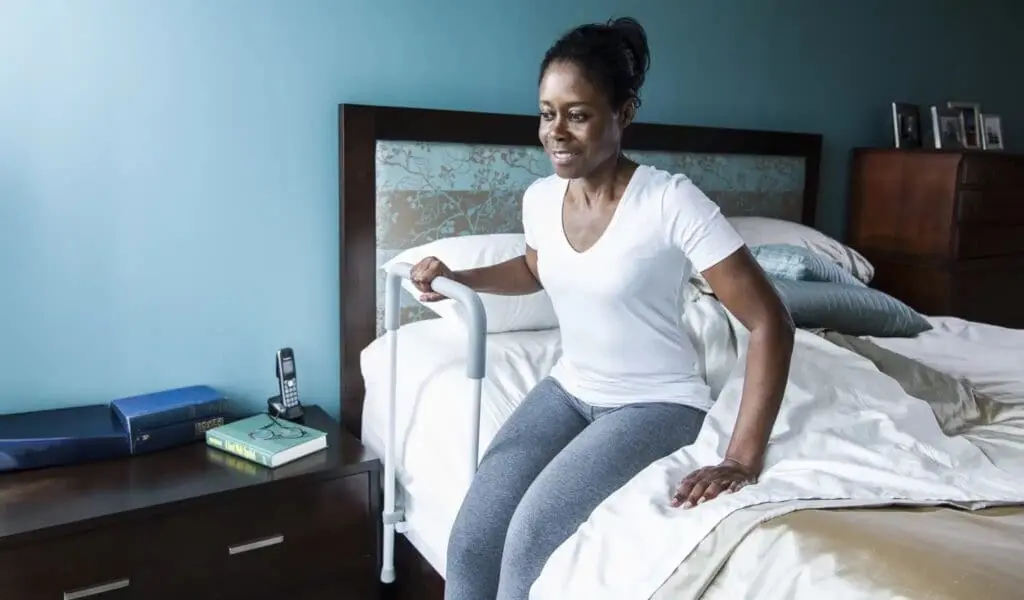
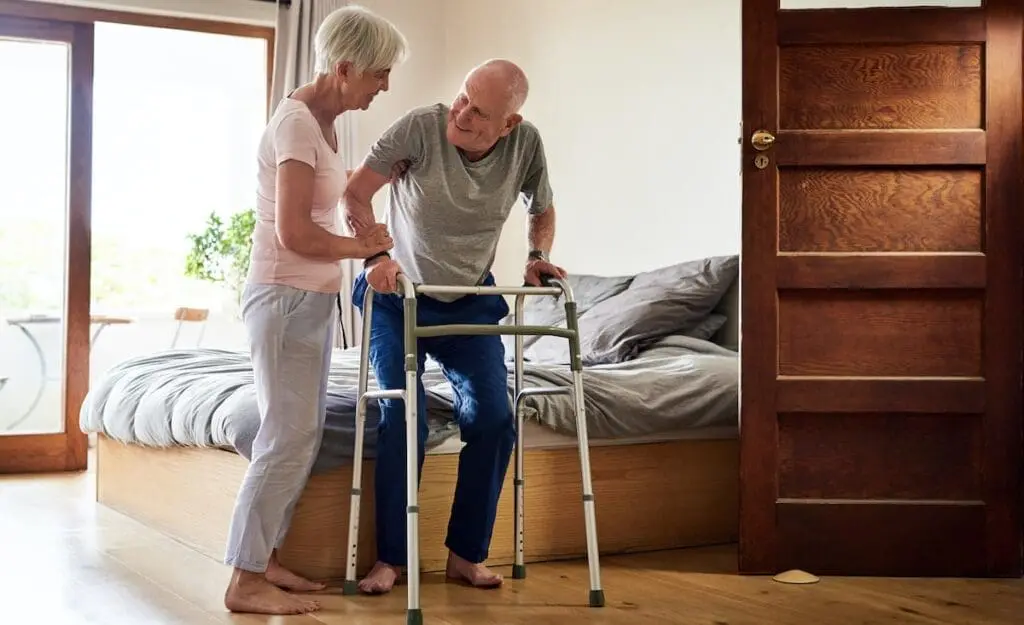
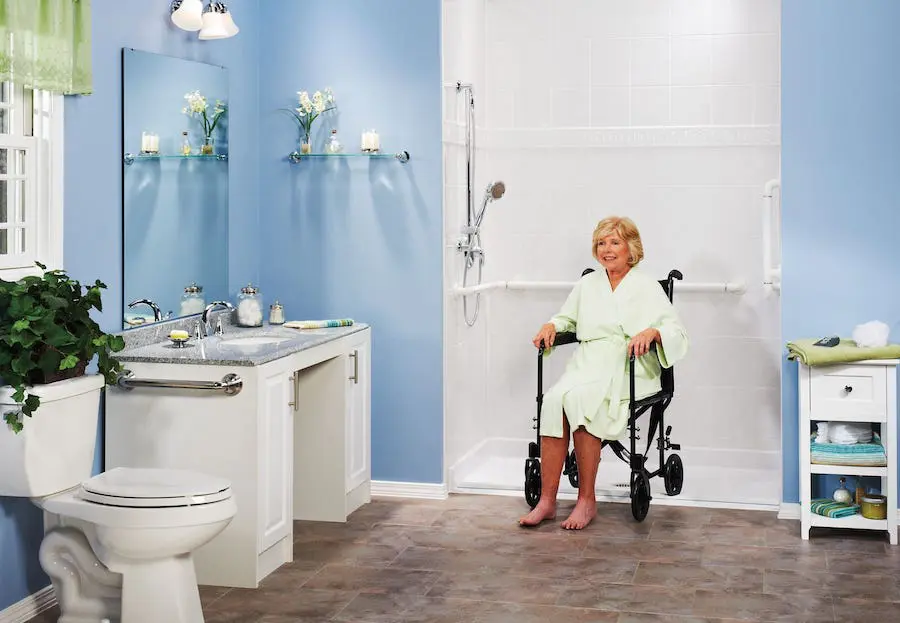
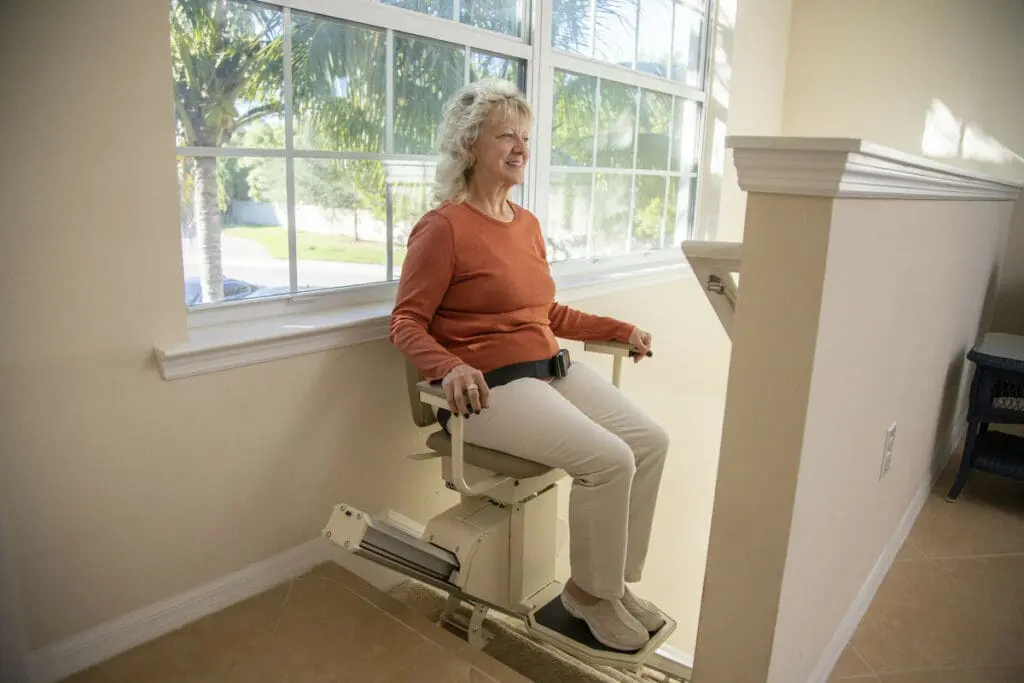
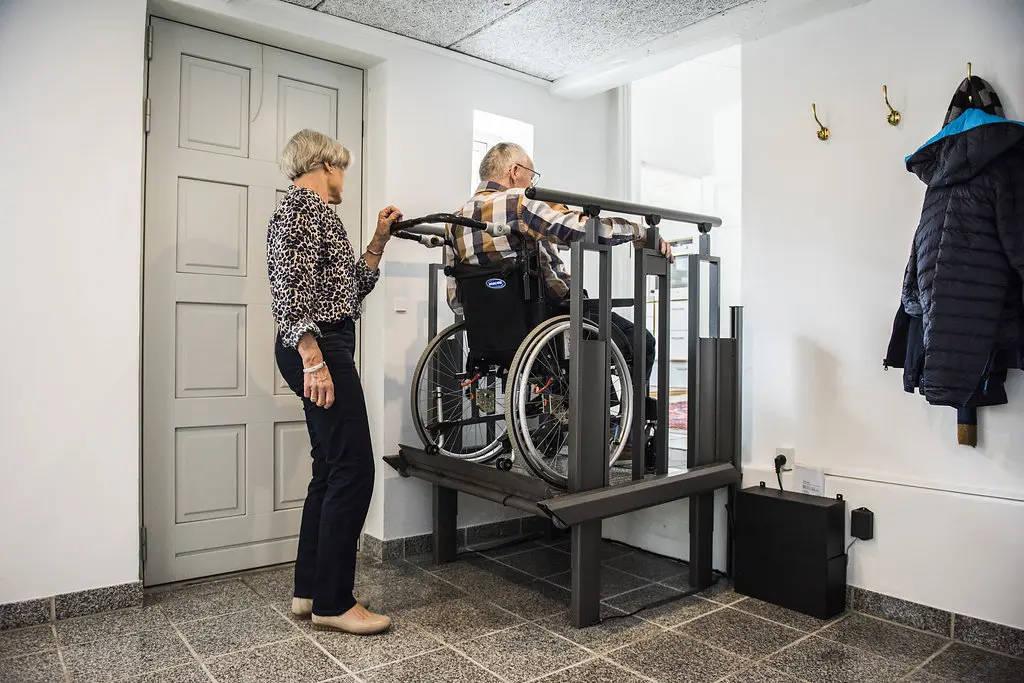
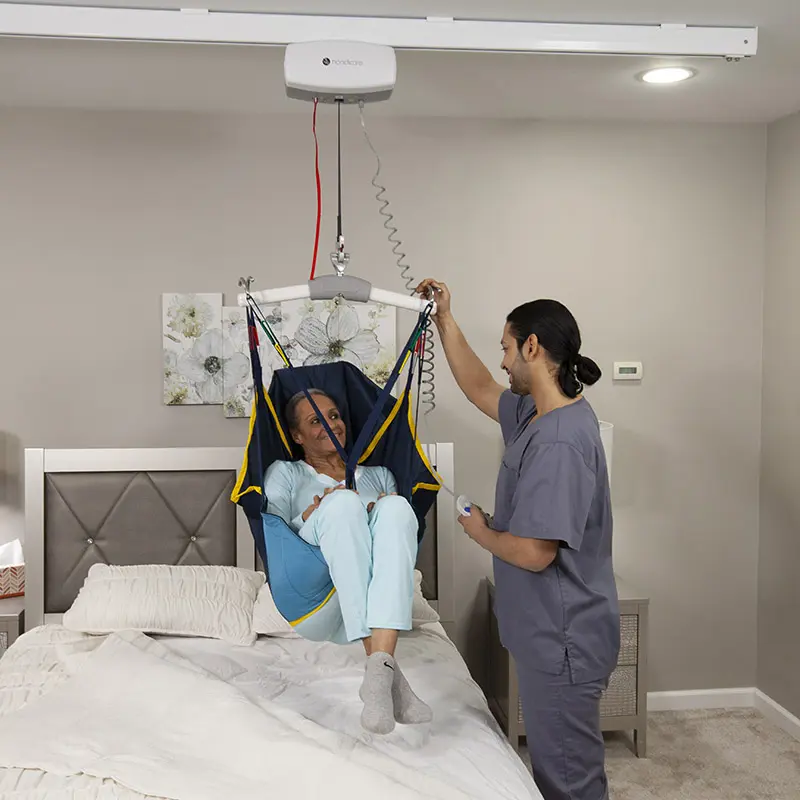
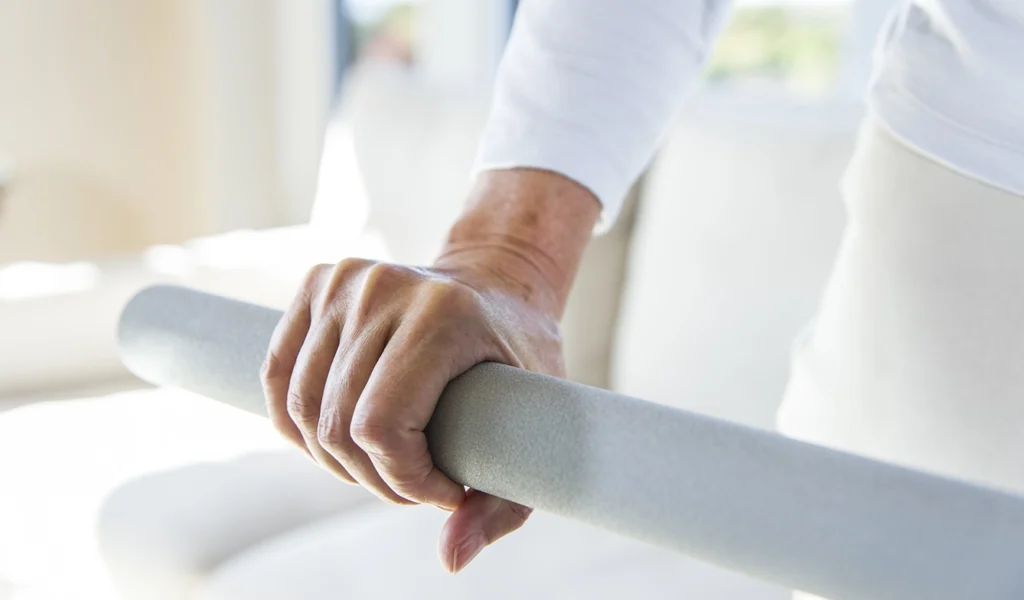
Bedroom
- Bedside Rails and Grab Bars: Install sturdy bedside rails to assist with getting in and out of bed safely. For example, a rail with a built-in pouch can also hold items like a phone, book, or water bottle, keeping necessities within arm’s reach.
- Superpole Systems: Superpole systems are floor-to-ceiling poles with a secure grip that can be placed beside the bed or chair to help with sitting, standing, or transferring. For example, models with horizontal grab bars provide extra stability for individuals with limited strength.
- Portable Ceiling Lifts and Fixed Ceiling Lifts: These devices allow caregivers to safely lift and transfer individuals from the bed to a wheelchair or other areas. A portable lift is ideal for those who want flexibility, while a fixed system offers a permanent solution for regular use.
- Lighting Modifications: Use motion-sensor nightlights or bedside lamps with easy-to-use switches to reduce nighttime falls.
Bathroom
- Walk-in Tub and Walk-in Shower: Walk-in tubs with a low entry threshold and built-in seating can prevent slips. Walk-in showers with no barriers or curbs make entry easy for wheelchair users. Adding textured tiles or anti-slip coatings enhances safety.
- Shower Accessories: Hand-held showerheads with adjustable heights make bathing more convenient. Combine this with a shower chair or bench for seated bathing. Anti-slip mats or adhesive strips add traction to slippery surfaces.
- Toilet Lift: Install a toilet lift or replace your standard toilet with a comfort-height model. For example, elevated toilets make sitting and standing easier for individuals with limited mobility or arthritis.
- Grab Bars and Accessories: Install grab bars near the shower, bathtub, and toilet. Choose bars with textured grips for added security, and position them at heights that are easy to reach.
Kitchen
- Lower Countertops and Cabinets: Modify countertop heights to accommodate wheelchair users. Use pull-down shelving systems in upper cabinets for easy access.
- Pull-Out Shelves and Lazy Susans: These additions allow for better organization and reduce the need to bend or reach into deep spaces. For instance, pull-out pantry shelves provide easy access to items stored at the back.
- Easy-Grip Handles: Replace round knobs on drawers and cabinets with D-shaped or lever-style handles for easier operation, especially for those with arthritis.
- Induction Cooktop: This safer alternative to gas or electric stoves stays cool to the touch, reducing the risk of burns.
- Anti-Fatigue Mats: Place mats near areas where extended standing is common, such as in front of the sink or stove, to reduce strain on joints.
Living Area
- Remove Trip Hazards: Eliminate loose rugs and secure furniture to prevent accidental trips. For example, use rug grippers to keep rugs in place and opt for low-pile carpets.
- Non-Slip Pads: Use non-slip pads under rugs and furniture to ensure they stay in place.
- Wide Pathways: Arrange furniture to create clear paths at least 36 inches wide, allowing easy navigation for wheelchairs, walkers, or other mobility aids.
- Smart Technology: Install voice-controlled lighting and smart thermostats to reduce the need for manual adjustments.
Stairways
- Stairlifts: Install straight stairlifts for simple, linear staircases or curved stairlifts for more complex designs. For instance, modern stairlifts come with features like remote controls and foldable seats to save space.
- Handrails on Both Sides: Add sturdy handrails on both sides of the staircase for extra support.
- Enhanced Lighting: Use LED strip lighting along stair edges to improve visibility, especially in dimly lit areas.
Walkways
- Clutter-Free Walkways: Ensure all pathways inside the home are free from obstructions like electrical cords, furniture, or décor.
- Non-Slip Treatments: Apply non-slip coatings to tiled, hardwood, or laminate floors to prevent slips.
- Threshold Adjustments: Smooth out or remove raised thresholds between rooms to prevent tripping hazards and allow for wheelchair accessibility.
Home Exterior
- Platform Lifts and Ramps: Install incline lifts or vertical platform lifts to help with wheelchair access to porches or elevated entrances. These can be customized to fit the home’s exterior design.
- Modular Ramps: Modular ramps made of durable aluminum or wood can be tailored to fit your home and are ideal for permanent installations.
- Portable Ramps and Ramp Rentals: Portable ramps offer flexible solutions for temporary needs, such as visiting family or short-term recovery. For example, lightweight folding ramps can be stored easily when not in use.
- Outdoor Lighting: Add motion-sensor lights to entryways and pathways to enhance nighttime safety.
Learn more about home safety checklist items to inspect to ensure your home is as safe and accessible as possible.
Fix Common Safety Hazards in the Home for Seniors
Addressing potential safety hazards is a critical step in aging in place. Common risks include:
- Lighting: Ensure all areas, including stairways and hallways, are well-lit.
- Electrical Hazards: Secure loose cords and replace damaged outlets.
- Slippery Surfaces: Use non-slip mats and apply anti-slip coatings to tile and hardwood floors.
- Fire Safety: Install smoke detectors and fire extinguishers, and ensure escape routes are accessible.
- Clutter: Regularly declutter to reduce trip hazards.
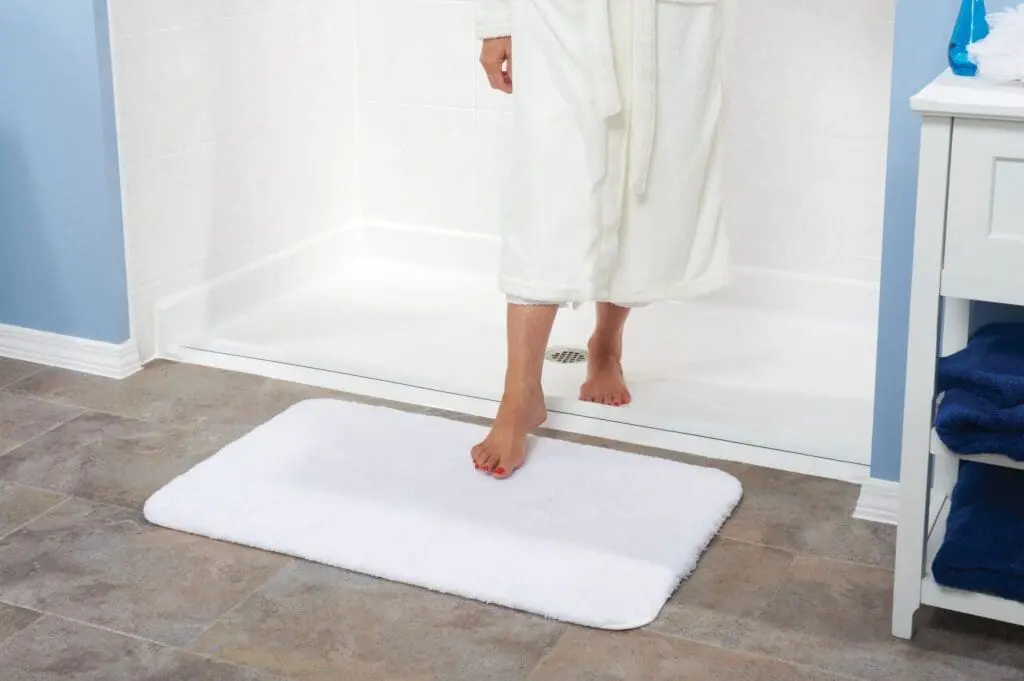
Government Aid for Home Safety Modifications
Programs like the Veterans Affairs Home Improvement and Structural Alterations (HISA) Grant and Medicaid Home and Community-Based Services (HCBS) can help cover the costs of renovations. There are also Federal and state government programs, such as Medicare and Medicaid.
Considerations for Long-Term Living in Place
Aging in place is about more than modifying your home—it’s about creating a lifestyle that supports your evolving needs. Proper planning for daily tasks, social connections, and healthcare can make the experience fulfilling and manageable.
Cleaning and Home Maintenance
- Simplify Home Layout: Declutter and reduce the number of rooms actively in use to minimize cleaning and maintenance needs. For example, focus on creating one or two functional living spaces while closing off unused areas.
- Professional Services: Consider hiring professionals for routine cleaning, lawn care, and home repairs. Subscription-based services can provide consistency and reliability.
- Smart Appliances: Use appliances with simple, intuitive controls. For example, front-loading washers and dryers with large buttons and displays are more accessible for individuals with limited mobility or vision.
- Home Automation: Install robotic vacuums and smart home systems to automate cleaning tasks and reduce physical strain.
Shopping
- Online Grocery Shopping: Services like Instacart or Amazon Fresh can deliver groceries directly to your door, saving you the hassle of traveling to a store.
- Subscription Services: Consider signing up for subscription deliveries for essentials like toiletries, household goods, or medication refills.
- Transportation Assistance: Arrange for a family member, friend, or local community program to assist with shopping trips if in-person visits are needed. Senior-specific transportation programs often offer door-to-door services for errands.
Food and Cooking
- Easy-to-Prepare Meals: Invest in meal delivery services like Meals on Wheels or pre-portioned meal kits that cater to dietary needs (low sodium, diabetic-friendly, etc.).
- Ergonomic Kitchen Tools: Use tools designed for seniors, such as jar openers, lightweight pots and pans, and knives with larger, easy-grip handles.
- Accessible Storage: Store frequently used items on countertops or in lower cabinets to reduce the need for bending or reaching. Lazy Susans or pull-down cabinet racks can further simplify access.
- Kitchen Safety: Install automatic stove shut-off devices and smoke detectors to prevent accidents.
Medical Care
- Home Health Monitoring Systems: Use wearable devices or home monitors to track vital signs like blood pressure, heart rate, and glucose levels. Some systems can send alerts to caregivers or healthcare professionals.
- Telehealth Services: Utilize telemedicine platforms for routine check-ups and consultations to reduce the need for travel.
- Medication Management: Set up an automatic pill dispenser or use a smartphone app to track and remind you about medication schedules. Family members or caregivers can also monitor these remotely.
- Emergency Preparedness: Install personal emergency response systems (PERS) with wearable buttons to call for help in case of falls or other emergencies.
Support from Friends and Family
- Scheduled Visits: Create a routine schedule for friends or family members to visit, ensuring regular social interaction and support.
- Technology for Connection: Use video-calling apps like Zoom or FaceTime to stay in touch with loved ones who live far away.
- Paid Caregivers: If family members cannot provide daily support, consider hiring a caregiver for companionship, meal prep, or basic assistance.
- Community Programs: Participate in local senior centers or community groups that offer activities, transportation, or meal programs.
Transportation
- Wheelchair-Accessible Vehicles: Modify your current vehicle or purchase one designed to accommodate mobility aids like wheelchairs or scooters.
- Senior Transportation Services: Many communities offer transportation options tailored to seniors, such as door-to-door services or shuttles to medical appointments.
- Ride-Sharing Apps: Services like Uber and Lyft often have senior-friendly options, including drivers trained to assist with mobility needs.

Ready to Start Your Home Safety Modifications?
Aging in place can be a fulfilling choice that allows seniors to maintain their independence and quality of life. With proper planning, home modifications, and support systems, you can create a safe and comfortable environment that meets the evolving needs of aging individuals.
Whether you’re preparing for yourself or helping a loved one, the team at Atlas Home Safety is happy to help with your home safety projects.
For more information from one of our knowledgeable and friendly representatives, call us at 844-660-SAFE or contact us online today!










